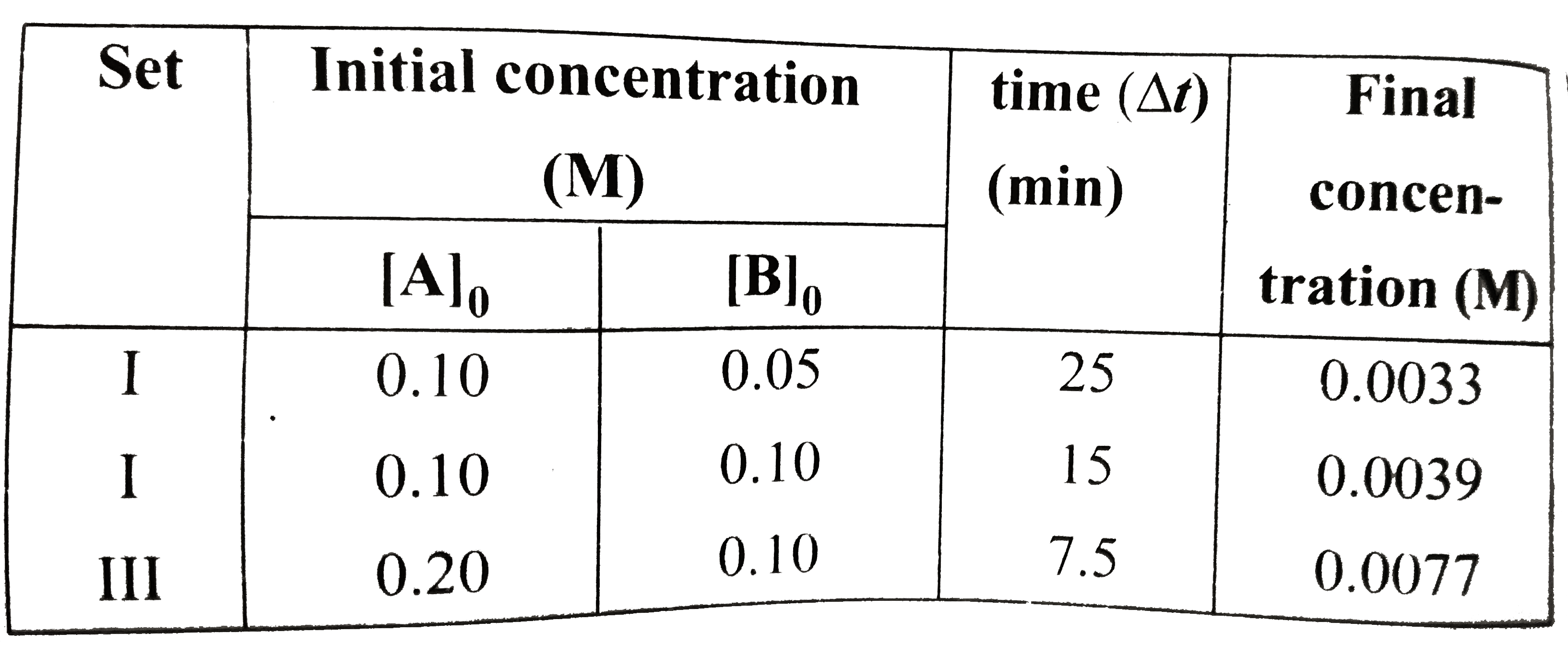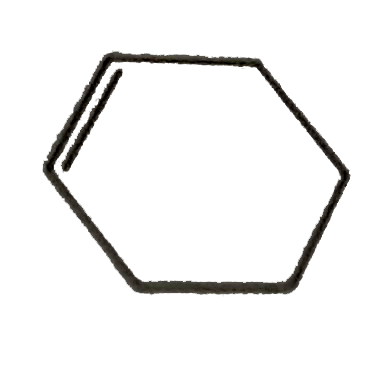(p−ClC6H4)2CHCCl3 is used as a/an
Antiseptic for wounds
Insecticide
Pyrene
Refrigerant
The correct Answer is:2
To solve the question regarding the use of the compound (p−ClC6H4)2CHCCl3, we will follow these steps:
Step 1: Identify the Compound
The compound given is \( (p-ClC_6H_4)_2CHCCl_3 \). This notation indicates that we have a central carbon atom (CH) attached to two para-chlorophenyl groups and one trichloroethyl group.
Step 2: Draw the Structure
To visualize the compound, we can draw its structure:
- Start with a central carbon atom (C).
- Attach two para-chlorophenyl groups (\( p-ClC_6H_4 \)) to this carbon.
- Attach a trichloroethyl group (CCl3) to the same central carbon.
The structure can be represented as follows:
Cl|C6H4−C−Cl3|C6H4
Step 3: Determine the Common Name
The common name for this compound is Dichloro-Diphenyl-Trichloroethane, abbreviated as DDT.
Step 4: Identify the Use of DDT
DDT is widely known for its use as an insecticide. It was historically used for pest control in agriculture and for controlling disease-carrying insects such as mosquitoes.
Step 5: Analyze the Options
Now, let's analyze the provided options:
- Option A: Antiseptic for wounds - Incorrect, DDT is not used as an antiseptic.
- Option B: Insecticide - Correct, DDT is primarily known as an insecticide.
- Option C: Pyrene - Incorrect, this compound is not pyrene.
- Option D: Refrigerant - Incorrect, DDT is not used as a refrigerant.
Conclusion
Based on the analysis, the correct answer is Option B: Insecticide.
---
The compound given is \( (p-ClC_6H_4)_2CHCCl_3 \). This notation indicates that we have a central carbon atom (CH) attached to two para-chlorophenyl groups and one trichloroethyl group.
To visualize the compound, we can draw its structure:
- Start with a central carbon atom (C).
- Attach two para-chlorophenyl groups (\( p-ClC_6H_4 \)) to this carbon.
- Attach a trichloroethyl group (CCl3) to the same central carbon.
Cl|C6H4−C−Cl3|C6H4
The common name for this compound is Dichloro-Diphenyl-Trichloroethane, abbreviated as DDT.
DDT is widely known for its use as an insecticide. It was historically used for pest control in agriculture and for controlling disease-carrying insects such as mosquitoes.
Now, let's analyze the provided options:
- Option A: Antiseptic for wounds - Incorrect, DDT is not used as an antiseptic.
- Option B: Insecticide - Correct, DDT is primarily known as an insecticide.
- Option C: Pyrene - Incorrect, this compound is not pyrene.
- Option D: Refrigerant - Incorrect, DDT is not used as a refrigerant.
Based on the analysis, the correct answer is Option B: Insecticide.
Topper's Solved these Questions
- HALOALKANES AND HALOARENES BOOK - AAKASH INSTITUTE ENGLISHCHAPTER - HALOALKANES AND HALOARENES EXERCISE - Assignment (Section - B ) ( Objective Type Question(One option is correct ))
36 Videos
- HALOALKANES AND HALOARENES BOOK - AAKASH INSTITUTE ENGLISHCHAPTER - HALOALKANES AND HALOARENES EXERCISE - Assignment (Section - C ) ( Objective Type Question(More than one options are correct ))
17 Videos
- HALOALKANES AND HALOARENES BOOK - AAKASH INSTITUTE ENGLISHCHAPTER - HALOALKANES AND HALOARENES EXERCISE - Illustration
6 Videos
- GENERAL PRINCIPLES AND PROCESSES OF ISOLATION OF ELEMENTSBOOK - AAKASH INSTITUTE ENGLISHCHAPTER - GENERAL PRINCIPLES AND PROCESSES OF ISOLATION OF ELEMENTSEXERCISE - Try Yourself
33 Videos
- HYDROCARBONSBOOK - AAKASH INSTITUTE ENGLISHCHAPTER - HYDROCARBONSEXERCISE - Assignment(Section - C) (Previous Years Questions)
60 Videos
Similar Questions
The following data were observed for the following reaction at 25∘C,CH3OH+(C6H5)3CCl→(C6H5)3C.OCH3+HCl

Rate constant of the above experiment is (in L2M−2−1min) :
View SolutionConsider the following compounds (1) C6H5−NH−CH3 (2) C6H5−NH−C6H5 (3) (C6H5)3N(4)CH3−CH2−NH2 write the basicity order
View Solution(1) C6H5−O∣∣C−C6H5
(2) C6H5−CHO
(3) p−CH3−C6H4−CHO
(4) p−CH3O−C6H4−CHO
Correct order for nucleophilic addition reaction :
View SolutionGive the decreasing order of reactivity opf diazonium ion coupling with phenol.
I. p−NO2−C6H4⊕N2 II. p−Cl−C6H4⊕N2
III. C6H5⊕N2 IV. p−Me−C6H4⊕N2
V. p−MeO−C6H4⊕N2
View SolutionArrange the carbanions, (CH3)3¯¯¯C,¯¯¯CCl3,(CH3)2¯¯¯CH,C6H5¯¯¯CH2, in order of their decreasing stability
View SolutionArrange the carbanions, (CH3)3¯¯¯C,¯¯¯CCl3,(CH3)2¯¯¯CH,C6H5¯¯¯CH2, in order of their decreasing stability
View SolutionName of the follwing groups:
a. C6H5−, b. C6H5CH2−
C. (C_(6)H_(5))_(2) CH-,d.(C_(6)H_(5))_(3) C-<br>e.C_(6) H_(5) CH-,f.C_(6) H_(5) -overset(|)underset(|)(C)-
View SolutionIf enthaopy of hydrogenation of C6H6(l) into C6H12(l) is −205kJ/mol and resonance energy of C6H6(l) is −152kJ/mol then enthaopy of hydrogenation of

Assume ΔHvap of C6H6(l),C6H12(l) all equal :
View SolutionIf enthalpy of hydrogenation of C6H6(l) into C6H12(l) is −205kJ/mol and resonance energy of C6H6(l) is −152kJ/mol then enthalpy of hydrogenation of

Assume ΔHvap of C6H6(l),C6H8(l) all equal :
View SolutionThe bond dissociation energy depends upon the nature of the bond and nature of the molecule. If any molecule more than 1 bonds of similar nature are present then the bond energy reported is the average bond energy.
If enthalpy of hydrogenation of C6H6(l)intoC6H12(l) is −205kJ and resonance energy of C6H6(l) is −152kJ/mol then enthalpy of hydrogenation of is ? Answer ΔHvap of C6H6(l),C6H10(l),C6H12(l) all are equal:
is ? Answer ΔHvap of C6H6(l),C6H10(l),C6H12(l) all are equal:
View Solution
